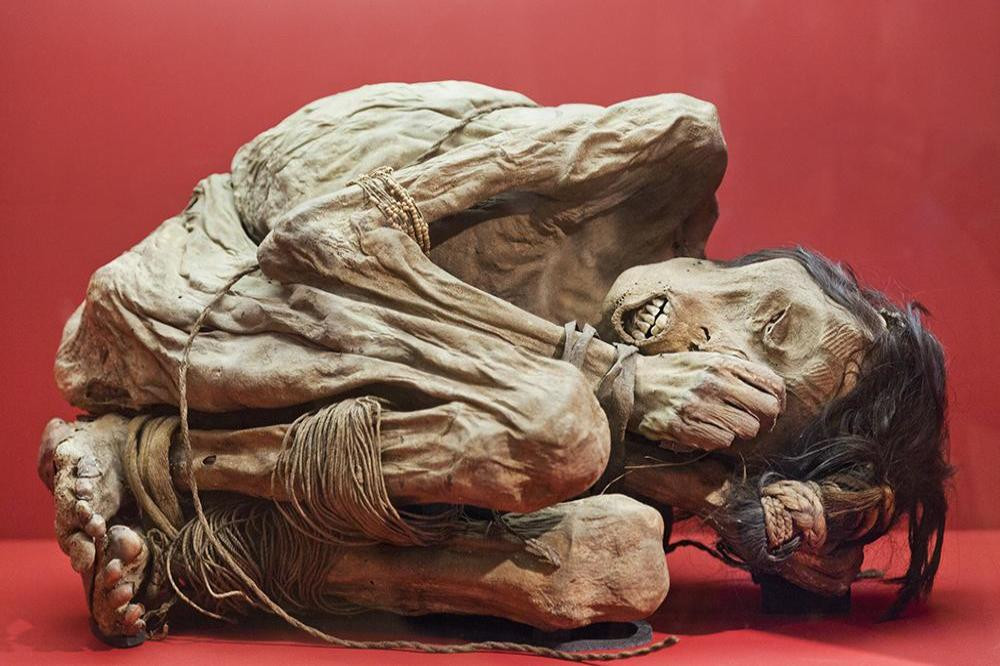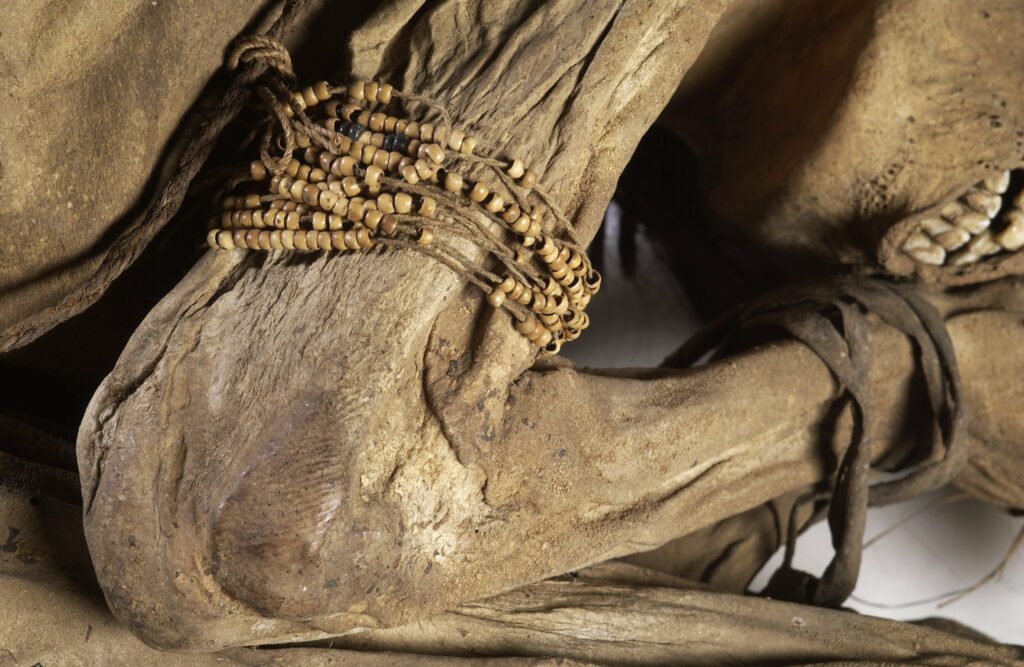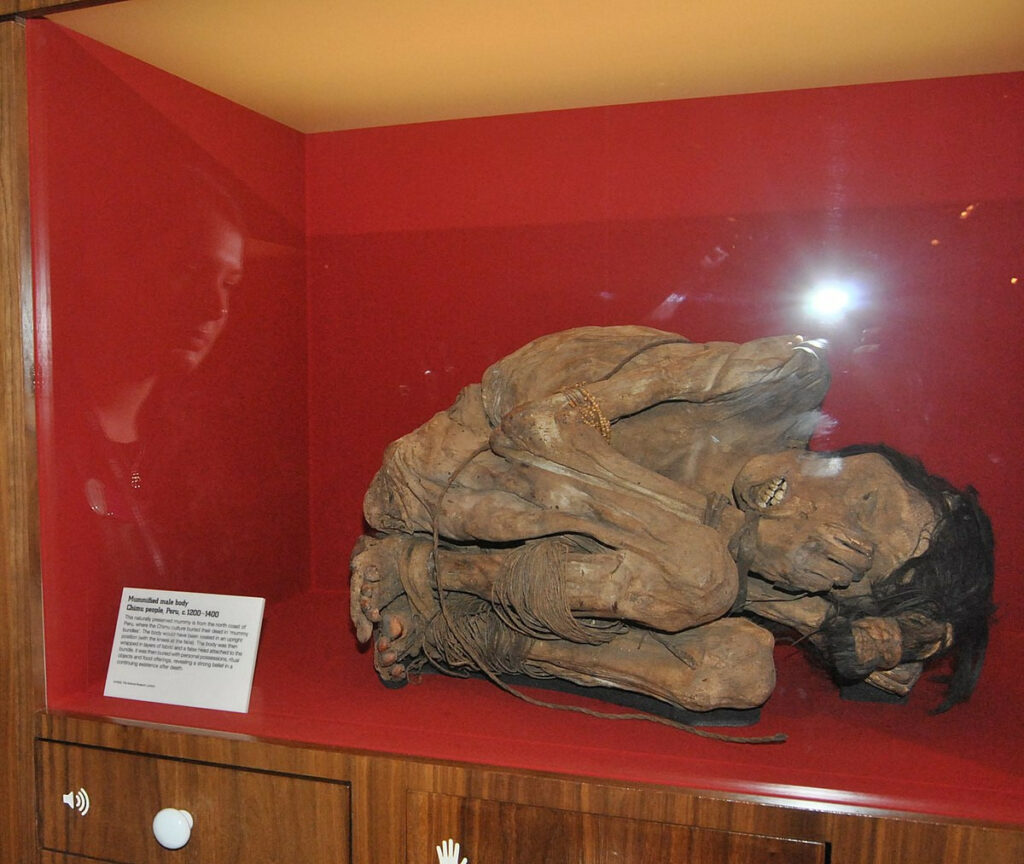Unearthing an Ancient Peruvian Mystery
In the parched deserts of northern Peru, archaeologists have uncovered a remarkable find – a naturally mummified male from the ancient Chimu civilization. Discovered in a fetal position with bound hands and feet, this silent sentinel offers a rare glimpse into a vanished world, revealing the intricate beliefs and practices of a once-thriving culture.

The Mummy’s Remarkable Journey Through Time
Natural Preservation in the Desert Sands
Dating back to approximately 1200-1400 AD, this Chimu mummy owes its exceptional preservation to the arid desert climate and sophisticated burial customs. Unlike the deliberately embalmed mummies of Egypt, this individual was naturally desiccated by the harsh environment. The Chimu practice of wrapping their dead in layers of cotton and wool textiles further contributed to the incredible preservation of both the body and accompanying artifacts.

Symbolism in Death: The Fetal Position
The mummy’s fetal posture, a common feature in Chimu burials, is believed to symbolize rebirth and a return to Mother Earth’s embrace. The bound extremities may represent submission to the afterlife or an attempt to prevent the deceased from returning to the world of the living. These practices highlight the Chimu’s complex understanding of death and their belief in a cyclical nature of existence.

The Chimu Empire: A Glimpse into a Powerful Civilization
The mummy likely originated from Peru’s north coast, once the heart of the mighty Chimu Empire. This civilization flourished between 900 and 1470 AD, leaving behind a legacy of impressive architecture, intricate ceramics, and advanced metalworking. The Chimu society was highly organized, with a strict social hierarchy and a strong ancestral reverence. Their pantheon included deities such as the moon goddess Shi and the sea god Ni.
Unraveling the Mummy’s Secrets

While the mummy’s identity remains unknown, scientific analysis of its physical features and associated artifacts can provide valuable insights into the individual’s life and social status. Examination of bone structure, teeth, and hair can reveal age, health, and diet. Any accompanying grave goods can offer clues about cultural affiliation, social standing, and occupation. DNA analysis may even shed light on ancestry, migration patterns, and genetic predispositions.
Preserving the Legacy of an Ancient Culture

The Chimu mummy serves as a powerful testament to the enduring human spirit and the importance of preserving our collective past. By studying this silent witness to history, we gain a deeper understanding of our ancestors, their beliefs, and the world they inhabited. This knowledge enhances our appreciation for the richness and diversity of human cultures and inspires us to protect our shared heritage for future generations.
A Portal to the Past

More than just a preserved body, the Chimu mummy is a window into a lost civilization. It allows us to explore the complexities of human belief and the enduring legacy of ancient cultures. As we continue to learn from this remarkable individual, we gain a greater appreciation for the intricate tapestry of human history and the profound connections that bind us all across time.